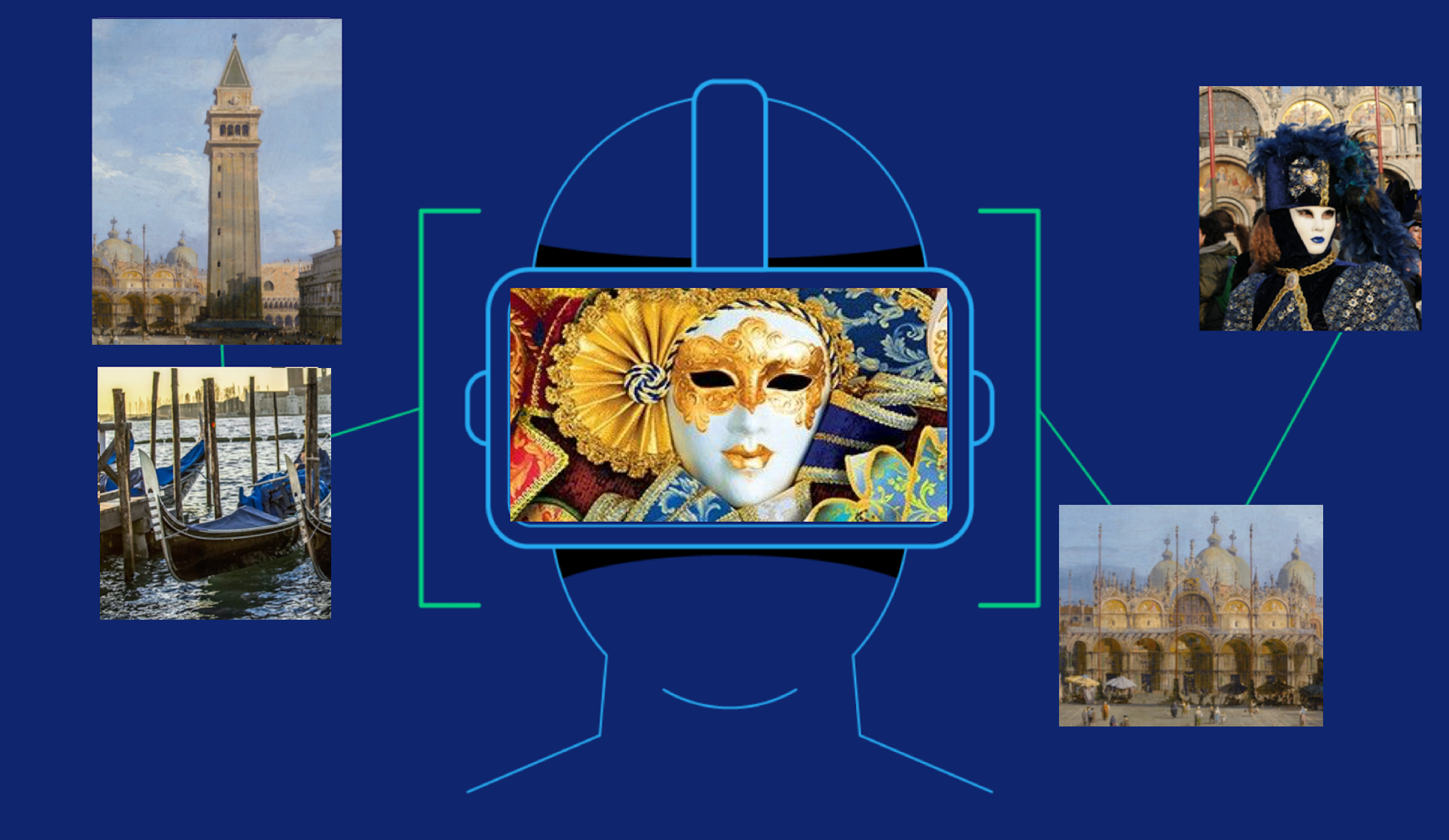This project required me to create a digital project brief. I took on the role of producer and made an imagined design for a digital experience with a multidisciplinary team. I had to engage with materials which detail how audiences engage with an experience, the acts of an experience, and the elements of an experience. VR is a technology which utilises 3D reality to position the user into another place. AR is a technology which overlays reality with additional 3D objects.
Overview:
Concealed is an immersive project which uses the Venetian Carnival as a vehicle to explore the paradox of hedonism and themes of concealment. It aims to create a narrative turn by returning studies of hedonism to the historical and away from the philosophical. This will encourage the audience to consider their positions as hedonists. This project is intended to be disorientating so that a friction is created between reality and the experience. Total immersion into the experience removes users from reality, altering perceptions of space and time. This project does not follow a storyline and is not designed to be a game. Users are encouraged to slow down and enjoy this particular moment. It is an alternative reality so that users can partake in the carnival without travelling to Venice.
AR and VR technologies will be used to create a digital enlivening and immersive series of events. Users will begin by interacting with AR to explore the carnival’s context, followed by a VR experience, where they become a part of the Carnival. These technologies create an impression by transforming users to another place. This is not designed to be an isolated experience; the carnival is about interactions and this project will mirror that. It is about social interactions more than the technology.
This project will collaborate with, and occur during, the Venice Carnival and Biennale, as a travelling exhibition around the UK.
Aims:
To create a rich visual library which doubles up as a cultural experience.
For users to experience “presence” in an alternate reality through VR.
Who is the audience?
Target audience are interested in Venetian culture, the Biennale and/or VR experience. Underprivileged people who cannot go to Venice will be prioritised. There is no recommended age limit. Audience likely has an awareness of VR but may not have used it before.
What technologies will be used?
AR, Desktop VR and Digital screens
Assistance from spatial sound experts, VR specialists, graphic experts, 3D artists, scene designers and software developers
Context of the Project:
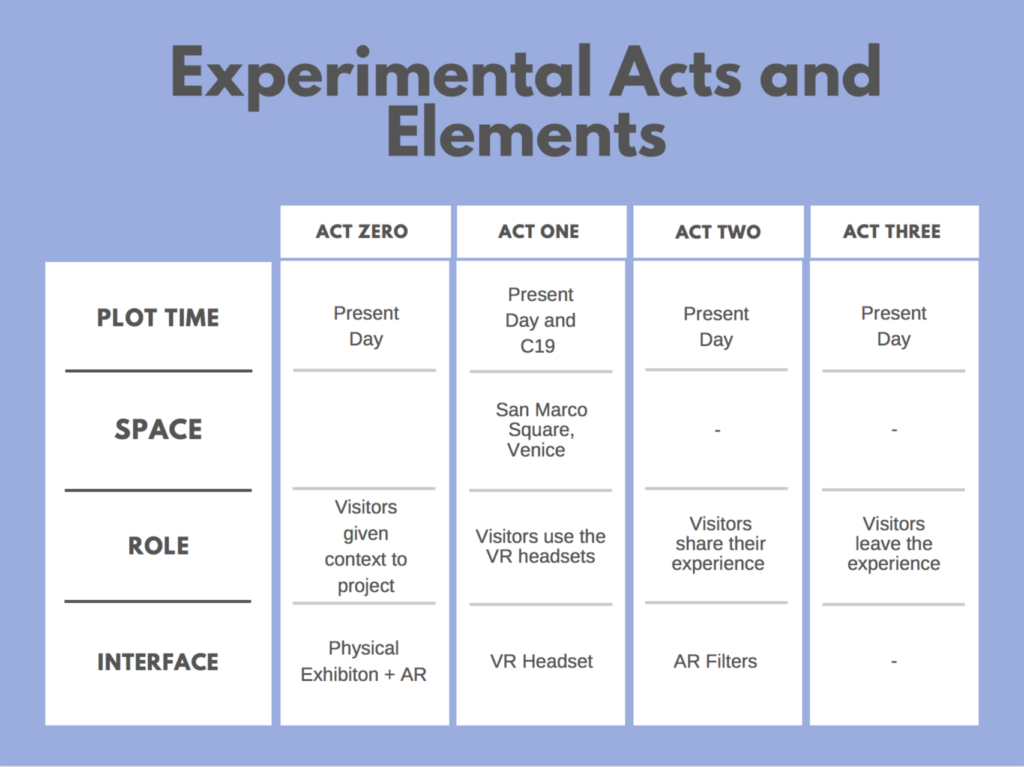
ACT ZERO, INTRODUCTION:
This act will introduce the contextual history of the Venice Carnival, whilst showing works from the Biennale. It will make use of set designers who will assist with bringing material cultures to life through an interactive exhibition; it is a physical space layered with virtual additions. This is a 2D introduction to the following act, which will be a 3D digital enlivening of the carnival.
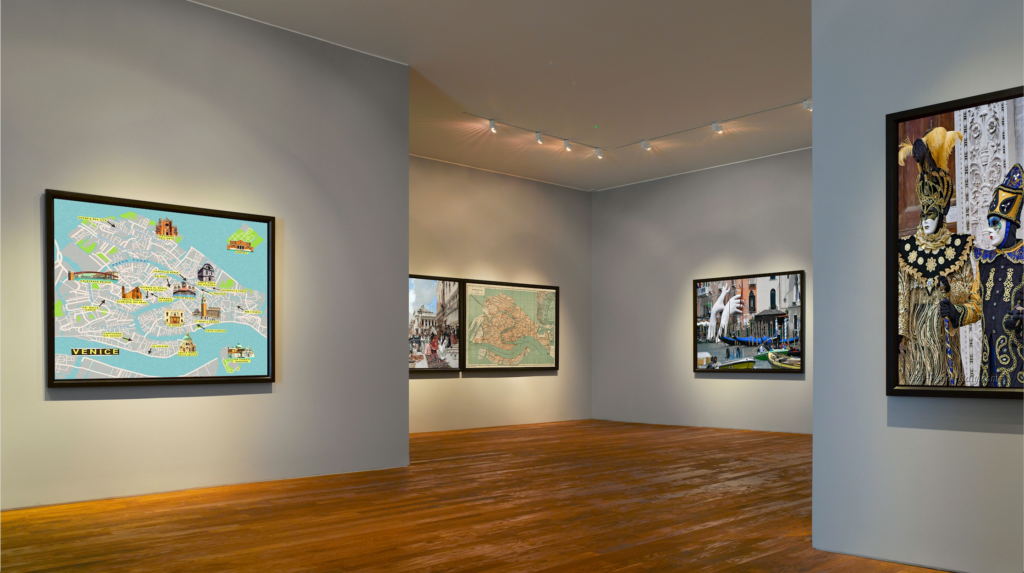
Upon entering the room, the audience will see a physical exhibition, demonstrated in Figure 2. Images here will be supplemented by AR technology. The audience will use the AR technologies to become well acquainted with the information before they enter the VR experience. This will happen through historic maps and carnival paintings, which once scanned, users can select sections they want to know more about. Other images in the exhibition will have AR features too, including haptic interfaces; it is an imaginative set design. The images will come to life through the use of AR, to engage the audience with visual and audio aids; humanoid characters will narrate ‘fun facts’ of Venice’s past and present.
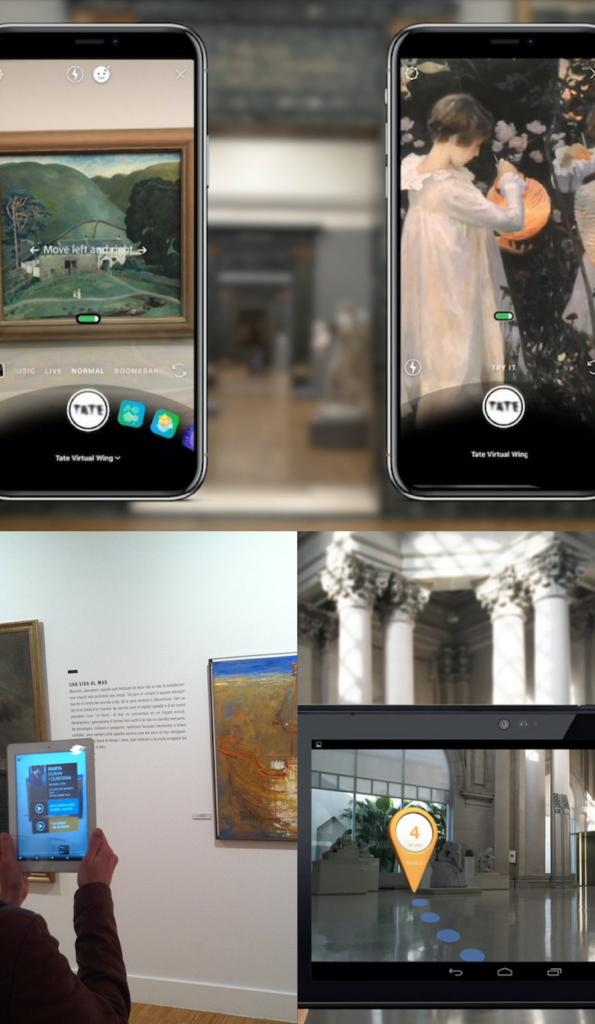
The AR will be accessed through the use of personal gadgets as they have increasingly advanced systems, as seen in Figure 5. This includes model detection of objects and images in the exhibition.
ACT ONE, VR:
This is a multifaceted experience, demonstrated by Figure 6, which will begin with users being seated as they experience a disorientating birds eye view of Venice, taking them through backstreets, across canals and finally to San Marco Square, where the Carnival is held. At this point they will ‘land’ and users will be invited to stand so that they can interact with each other. This will be communicated through headphones, which will then play carnival sounds, whilst allowing users to communicate with each other. Users voices will be altered to maintain their anonymity, in tune with the carnivals hedonistic theme of concealment. The VR headset comports as a mask, replicating the carnival masks, so that users can conceal their identities. Users will not be guided by a story, as this is not intended to replicate a video, but they will have the opportunity to interact with each other, as they would in the carnival; other users within the experience will appear as though they are wearing a carnival mask and costume. The users are taking on the role of a character, as opposed to being an invisible observer. This experience is designed to be a metaphysical tangible alternative to physically being at the carnival.
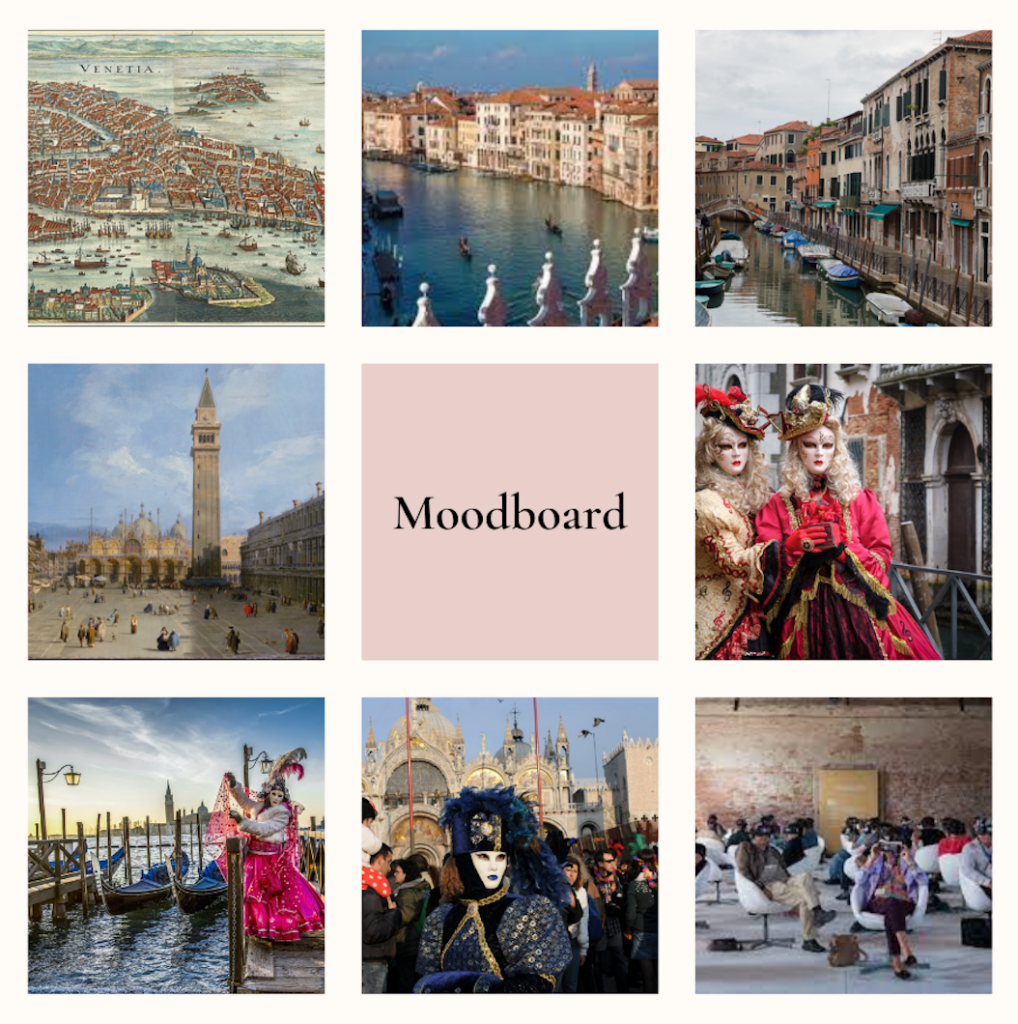
Despite being akin to computer games, this project will stray from gamification, instead opting for an immersive ‘real life’ approach; it will act as an alternative reality instead of a game. Desktop VR will be used as it includes features such as positional tracking for head and hand controllers. Spatial sound experts and programmers will be used to provide a full body immersion experience, postulating users with “presence”. Though designing it so that users can interact with each other is an added complexity to the process, it will compound the experience because it will create a more realistic impression of the carnival, to assist with a seamless transition from reality to the VR experience, consolidating the immersive nature of the project.
Spatial sound experts will assist with dialogue, sound effects and music to encapsulate and guide the users within the 360 degrees of the project. This will alert them as to when they are able to remain seated, or when they are encouraged to stand and explore their environment.
Although this story could be told through other mediums, VR is beneficial in removing users from outside distractions, ensuring that they are entirely focussed on the present experience. This very notion foils the paradox of hedonism, and maintains a focus on the pleasure derived from the present moment. Users have to relinquish control as they surrender to the world in which they find themselves.
ACT TWO, SHARING THE EXPERIENCE
After the VR experience, users are invited to reflect upon their experience; this will involve digital participation. Using green screens, images of Venice will be superimposed by users, creating photographs of them to take home as a memory of the project. The digital image will have a QR code which they can use to access the image and record their reflections of the project onto to the project’s site; this can be anonymous if preferred. Figure 5 is an example of green screen use in film; this project will adapt this usage for tourism.
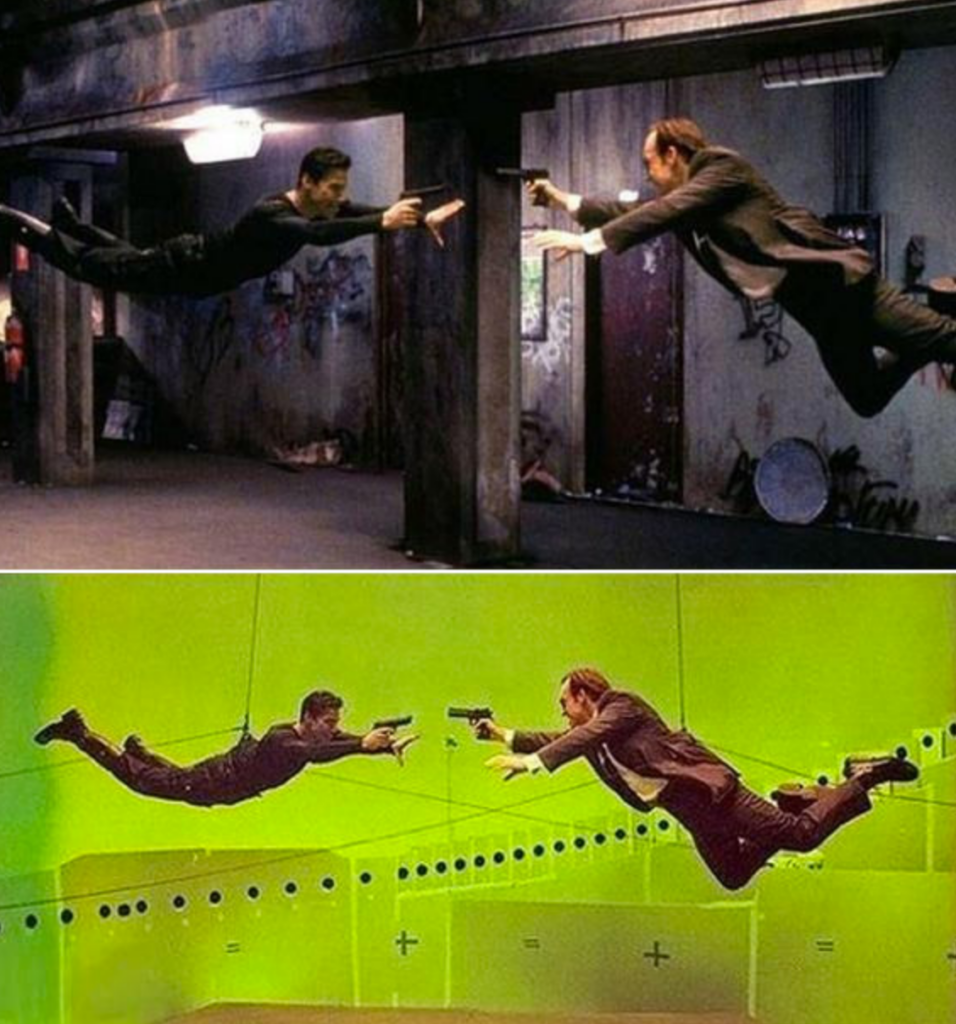
ACT THREE: END
Visitors leave the experience.
Other Comments:
The technical requirements of this project can only be realised with a large budget. Collaborating with the Venice Carnival and Biennale will assist with the majority of these costs, as well as artists from the Biennale volunteering their expertise.
Citations for all research in this section (including additional resources and inspiration) can be found under the ‘References’ menu

